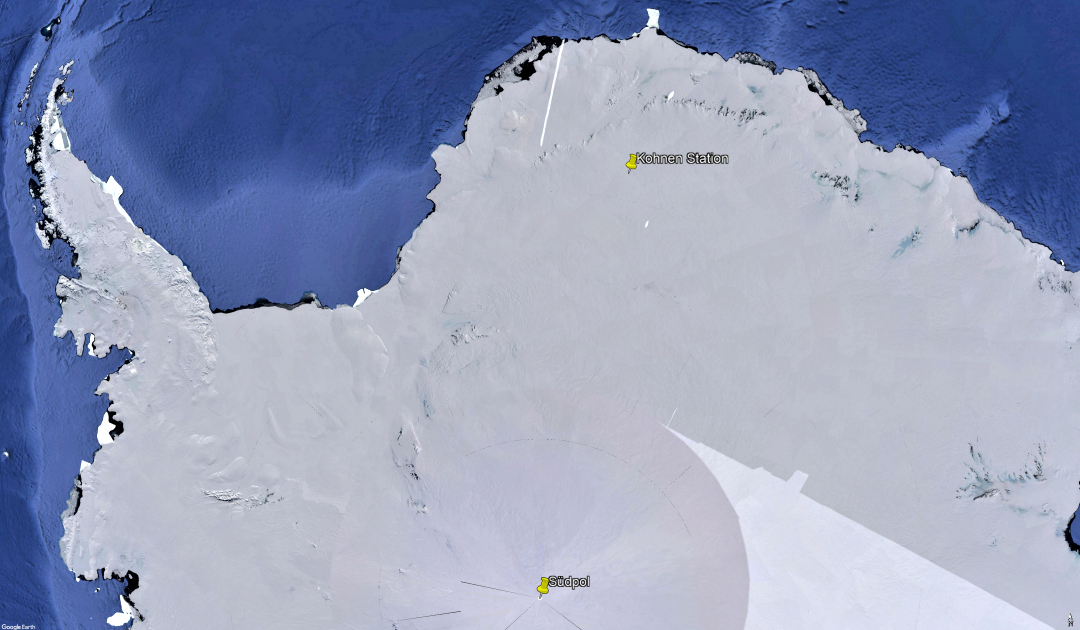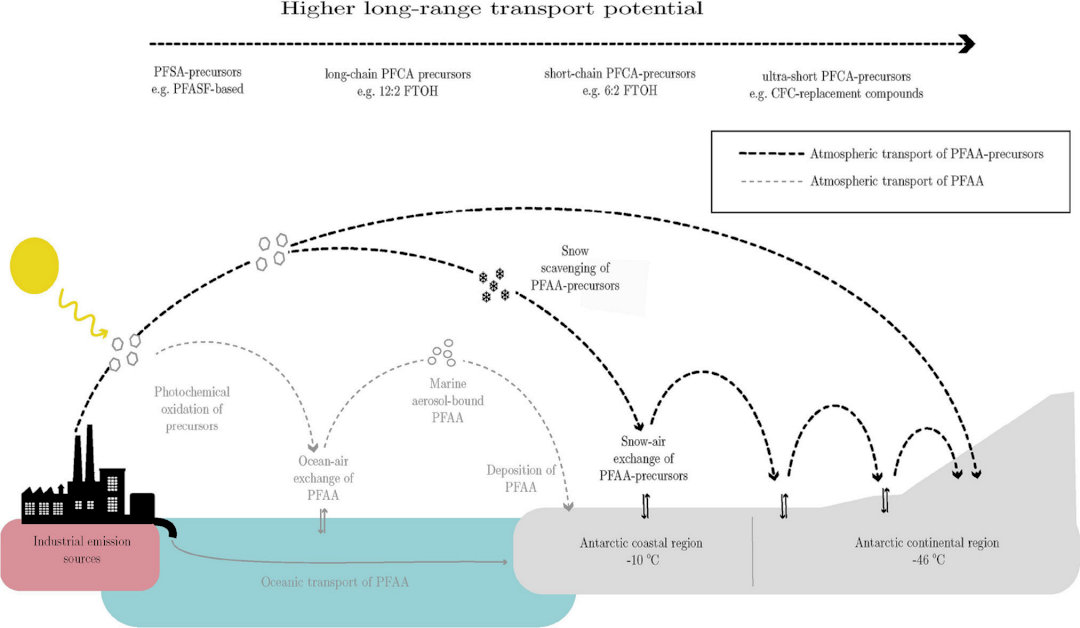
Antarctica is considered one of the last untouched and wildest regions on earth. That is a fact that has attracted more and more people to the continents in recent decades. This always raises the question of the impact of human presence, especially in terms of pollution. A study by British and German researchers now shows that it does not take physical presence of humans for chemical pollutants to find their way to Antarctica.
In firn samples, compressed snow on its way to ice formation, researchers from the Lancaster Environment Center in collaboration with the British Antarctic Survey BAS and the Helmholtz Center HEREON found certain long-lived synthetic pollutants called PFAAs (perfluoroalkyl acids) in various concentrations. Among the contaminants discovered is the particularly harmful PCOA (perfluorooctanoic acid), which is used in the production of water- and oil-repellent surfaces and which can affect the immune system and reproductive ability. Dr. Ralf Ebinghaus, head of the Institute for Coastal Environmental Chemistry at the HEREON Helmholtz Center, explains: “This find by our colleagues is remarkable and clearly documents that we are dealing with ‘forever chemicals’. It is also the first time that this chemical has been discovered in the depth profile of a firn core in the interior of Antarctica.” The study was published in the journal Environmental Science and Technology published in its latest issue.


The contaminants were measured in samples taken during a 2017 expedition to the Dronning Maud Land region of East Antarctica. The firn came from drill samples that covered a time frame between 1957 and 2017, the team writes in their paper. With the help of various analyses, the researchers succeeded in detecting the different PFAAs. Compared to other locations, concentrations of contaminants were at the same level or slightly lower, ranging from 137 to 4,711 picograms per liter of meltwater equivalent. The short-chain perfluorobutanoic acid, which is used in industry following a ban on the more harmful PFOA, accounted for the largest share. But it turned out that the quantities of most had steadily increased over time, and in some cases continue to rise. “We observed (…) increasing accumulation of PFCAs in snow, with chemical fluxes peaking in 2009 – 2013 for perfluorooctanoate (PFOA, C8) and nonanoate (PFNA, C9) with little evidence of a decline in these chemicals despite supposed recent global curtailments in their production,” the researchers write in their paper.

Regarding the origins of the pollutants, the authors write that, according to analytical results, they had not reached there through the stations and human activities in the remote region, but through hemispheric transport processes. In the process, precursors of the pollutants are emitted at production sites, which are then transported to Antarctica by means of atmospheric processes. It matters whether the pollutants are short-chain or long-chain. The shorter the chain, the further the transport into the interior of the continent. Often, they are first deposited on the coast thanks to the more frequent snowfalls, then get back into the air there and then “hop” further and further inland. “Transport to Antarctica of precursor compounds (8:2-FTOA) via the atmosphere seems to be the most likely pathway,” Dr. Ebinghaus explains of the transport processes. “The oceanic transport pathway is slow and also doesn’t reach that far inland.”
Of particular concern, in addition to transportation, is the fact that among the contaminants discovered, harmful PFOA has still not declined, despite a global production freeze. This suggests that either there are still high concentrations of precursors circulating in the atmosphere, or that not everyone is adhering to environmental protocols such as the Montreal or Stockholm Protocols, which were drawn up to protect Antarctica, among other things, and ratified by most countries. In any case, the research team is certain that the quantities of such long-lived pollutants will continue to increase in the future. “These substances become even more long-lived under polar conditions and are then true “forever chemicals.” This means that they are bound for a certain time. But under circumstances like large melting events, they can be released back into the environment, so they will be with us for a long time.”
Dr Michael Wenger, PolarJournal
More on the subject:





